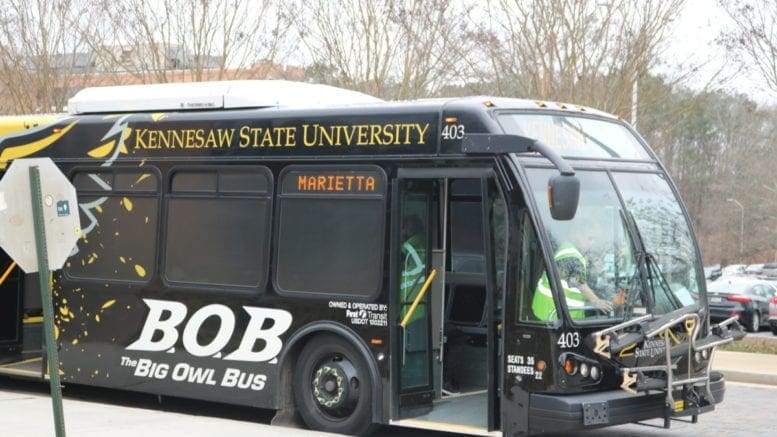[This article by Raynard Churchwell first appeared on the Kennesaw State University website, republished with permission]
Aiming to create systems where machines and their virtual counterparts communicate in real time, Carter Corbin and a team of Kennesaw State University students are advancing smart manufacturing by combining robotics and digital twin technology.
Studying mechatronics engineering in Kennesaw State’s Southern Polytechnic College of Engineering and Engineering Technology, Corbin is part of a growing number of undergraduates contributing to applied research that mirrors the challenges and solutions shaping today’s tech-driven industries. He is currently investigating how real-time system feedback can make automation smarter and more adaptable.
“In simple terms, a digital twin is a virtual version of a physical machine,” Corbin said. “What makes our system unique is that both the digital and physical models update in real time. If I move something in the virtual environment, the real machine reacts, and vice versa.”
The team’s project simulates a small-scale conveyor process using a puck and robotic arm. The digital and physical systems mirror each other, allowing researchers to test operations and diagnose problems without disrupting production.
“It is more than just a simulation,” Corbin said. “We can collect live data and prevent costly mistakes before they happen.”
Corbin collaborates daily with undergraduate peers, graduate students, and a Ph.D. candidate. His contributions earned him co-authorship on a paper being submitted to the ASME IMECE 2025 conference, focusing on digital twins in manufacturing system integration.
Ph.D. candidate Gershom Richards, who co-leads the research team, said the work has implications far beyond the lab. With more than two years of experience developing digital twin systems, he sees the technology as a game-changer for manufacturing.
“Digital twins are poised to be the next evolution of simulation technologies,” he said. “They centralize complex tasks while enabling integrated multiphysics simulation and system visualization, providing more accurate data and improving the decision-making process for both operators and machines.”
Originally from McDonough, Georgia, Corbin discovered KSU’s mechatronics engineering program after transferring from Gordon State College. Encouraged by a friend and drawn to a field that blends mechanical, electrical, and computer engineering, he quickly found his path.
“I’ve always wanted to be an engineer,” Corbin said. “But I also wanted to study something that stood out from the crowd. Mechatronics felt more dynamic than a traditional engineering degree.”
His interest deepened after he took a fluid power course with associate professor David Guerra-Zubiaga, which introduced him to hands-on automation projects. He began a directed study focused on building a digital manufacturing twin.
“Carter is an outstanding student who is consistently ranked at the top of his class,” Guerra-Zubiaga said. “He has demonstrated strong research leadership in collaboration with both graduate and Ph.D. students.”
One of the most challenging parts of his current research project has been integrating various hardware components with Siemens programmable logic controllers (PLCs), which serve as the backbone of industrial automation systems.
“We’ve faced compatibility issues,” he said. “It took trial and error to get it all working, but it was a valuable learning experience.”
After graduating in Spring 2025, Corbin will begin KSU’s Master of Science in Intelligent Robotic Systems program in the fall as a graduate research assistant and hopes to eventually pursue a Ph.D. in robotics. Corbin also plans to explore Robot Operating System (ROS) 2 with assistant professor Muhammad Tanveer. ROS 2 is used for robotic simulation and real-time communication in mobile systems.
While Corbin’s research team still seeks an industry partner, the lab uses real-world tools and systems supported by Siemens, including PLC trainers, safety interlocks, and sensor modules.
“This research is preparing us for the problems we’ll face in the field,” Corbin said. “We’re not just learning the theory. We’re applying it.”
